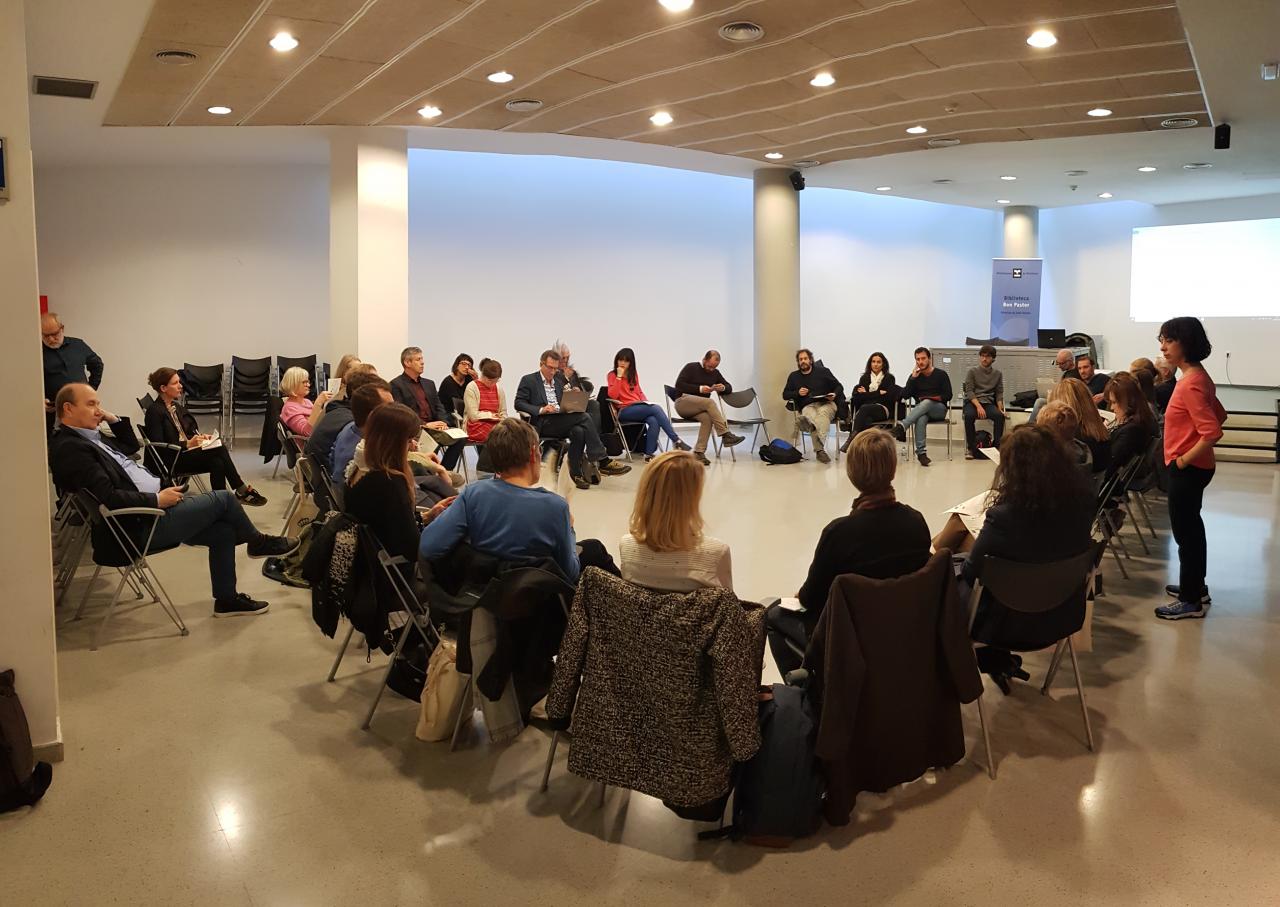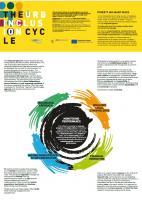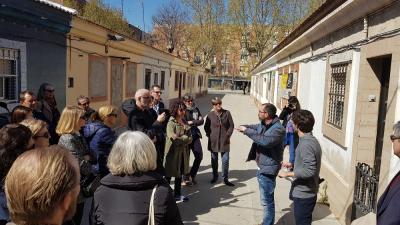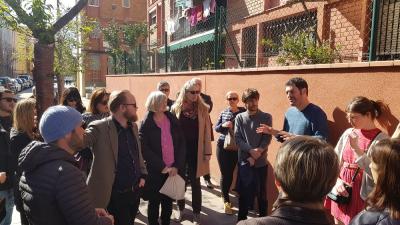
By Tià Riutort - URBinclusion project coordination team. The meeting was held in Barcelona on the 27th of March, the last opportunity for a presential partnership discussion on URBinclusion implementation.
Partners met in the public library of Bon Pastor’s neighbourhood, which is the one URBinclusion is focusing on. Bon Pastor is located in the North-East part of Barcelona very close to the Besòs River. It is one of the neighbourhoods that have historically experienced territorial isolation with regard to the rest of the city. Nowadays, as partners could notice, a new metro line has highly improved its transports connection. The meeting took place in one of the most important facilities of the neighbourhood due to library’s role in favour of community cohesion.
Partners were welcomed by the local team and Lead experts Anamaria Vrabie and Lorenzo Tripodi introduced the agenda of the day and its objectives. Since it was the last transnational meeting, the sessions were thought to deal with the last steps of the URBinclusion journey, linked to the delivery of outputs and the contributions to the Final Conference that would take place the following day in Barcelona, too.
The meeting started with a very interesting session about the content of the last draft of the “URBinclusion Manifesto/Recommendations”. 
The following session was dedicated to the OIF output. Once again, we were happy to have the presence of Mr. Peter Ramsden (URBACT). He has been attending other network meetings and following the development of our project with a lot of interest. His always constructive and illustrative comments and his English sense of humour have been with the network for a long time. The network has taken the advantage of his knowledge and expertise and his accompaniment has allowed making the elaboration of the OIF a friendlier task. He animated this session in which every partner explained at which point they were regarding the OIF and what they were including in it. Different approaches were pointed out: e.g. from the Barcelona’s “fishbone structure” to the Copenhagen’s “look to the past to go ahead” approach.
The last session before lunch break was dedicated to URBinclusion cases examples and their specific links to the implementation challenges. The aim consisted in connecting the cases with the ideas written down in the Manifesto sections and explaining the reasons behind. It was an individual and collective exercise of moving from the abstract to the concrete, from the principle to the practice and vice versa. Both exercises matter to illustrate URBinclusion recommendations.
It could seem unfeasible but, at the end, during the Mediterranean lunch there was even slot for a short presentation. Tonet Font, advisor for social innovation in Social Rights Area of the City Council of Barcelona, gave a quick overview about the history and urban evolution of Bon Pastor and the current social situation of the area. In that way, partners were introduced to the local context and to the site visit that started thereon.
A shining sun and nice community practitioners walked with the URBinclusion partners through Bon Pastor. During this walking 

After the site visit, there was a last session (that took place again in the venue) in which some partners shared their case example videos. It was a kind of “premiere”, where partners were able to have an overall picture of the compendium of URBinclusion videos and also the diversity of formats. Then, it was time to go to the city centre for attending the official reception that closed the day. The Deputy Major for Social Rights, Ms Laia Ortiz, hosted this reception in the Barcelona City Hall located in the old district. There were short speeches by Lluís Torrens and Tià Riutort on bealf of the Lead Partner team and by Anaïs de Muret, representative of the URBACT secretariat. Afterwards, partners had the chance to visit some enigmatic rooms of the City Hall and to go to the terrace, where they delighted the beautiful views while appreciating a stunning sunset on the city.
